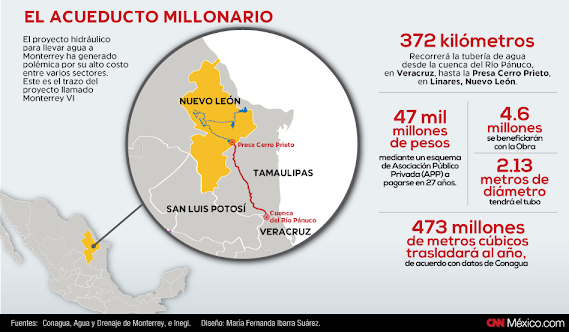The International North-South Transportation Corridor (INSTC)
One of the keys to the growth of the Middle East and the Central Asia regions beyond
the oil trade are infrastructure projects and commodity trade routes. Coalitions like the
BRICS have been strengthening the Eurasian region while connecting
trade routes between Eurasia, Africa, and South America. The BRICS form a
solid economic bloc in development that concentrates more than 40% of
the world's population and approximately 25% of global GDP seeking
cooperation and joint development of the bloc and its region as a counterweight to the pressure and destabilization from western coalitions and blocs. In
addition, the BRICS seek to have some financial independence, with the
New Development Bank (as an alternative to the World Bank), and economic
independence, with possible trade routes, summits for emerging
economies, and an informal preference for treatment among BRICS countries. Thus,
driven primarily by China (the BRICS' main economic and financial
power), that is under the military umbrell from Russia (the BRICS' main military power) which is engaged in a conflict with NATO in Ukraine, the Asian giant is
promoting important projects to connect Eurasia. For example, the new Silk
Road or Belt and Road Initiative, which is very popular concept worldwide and honors the name of the ancient
Silk Road. The new Silk Road is not only important for the main
BRICS countries (China, Russia, and India) but also for other important
countries in the Eurasian region such as Iran, a potential member of a
possible BRICS+. Actually, a potential bang in the Eurasian region is expected by 2023 given this and other initiatives in the region.
 |
| Figure: Trade route that goes from South Asia to North Asia, going through India, Iran, Azerbaijan and Russia, as traced by the INSTC. |
The heirs of the Persian Empire have been subjected to strong sanctions
by the West, starting from the Carter administration in the late 1970s
to unilateral exits from the Iran nuclear deal along with new
sanctions by the Trump administration and then new sanctions by the current
Biden administration. However, Iran has endured multiple sanctions from
the West and in 2022 ended up as the 11th economy in terms of nominal
GDP. Fortunately for the Iranian economy and as a byproduct of movements
by BRICS countries such as India and Russia, Iran could potentially find economic
relief thanks to the International North-South Transport Corridor
(INSTC). This economic corridor that extends approximately 7,200 km
(remember that the Earth's radius is around 6,300-6,400 km) aims to
establish railway, maritime, and road routes that will be beneficial for
trade between Russia, India, Iran, Central Asia, Western Asia, South
Asia, and Europe. In the same way that the Cape route (where goods from
India arrived in South Africa and then traveled around Africa with the goal of finally reaching
Europe) became obsolete when the Suez Canal route was discovered (blue
curve in our figure), the INSTC (red curve in our figure) would be a
more profitable and faster route for commodity trades between
India and Russia, while also crossing through key countries in Central Asia
like Iran. Indeed, given a study conducted by the Federation of Freight Forwarders’ Association of India (FFFAI), the goods that go through the INSTC are expected to be around 30% cheaper and 40% shorter in delivery time, than the standard route through the Suez canal. In this way, a country like Iran, which is undergoing winds
of change in the form of sanctions and nuclear treaties while trying to be
subdued by the West, could find another way out besides its oil. This could convert Iran into a geostrategic pivot in the region. The initial
agreement for the INSTC between Russia, India, and Iran was signed in 2002. Then, the first shipment was carried out in July 2022 to the Jawaharlal Nehru port in
Mumbai from the Astrakhan port in Russia. Moreover, it is expected that
eventually (although with a slow start) the INSTC will transport a capacity of 30 million tons per year.
Finally, while the BRICS and possibly a tentative BRICS+ will have to consider these commercial infrastructure projects as assets not only for the bloc but for the region as a whole, they should also be ready to protect such a regional infrastructure a priori. Hence, it is important to think beyond economic terms and consider the INSTC as a concept in the geopolitical sphere. This may become important to avoid possible destabilizations in the region along the INSTC, such as a possible escalation the conflict between Armenia and Azerbaijan, which is currently confined to the Nagorno-Karabakh region and has been attenuated by Russia. Also, possible desestabilizations to India (e.g. by linking P. M. Modi to the recent Gautam Adani's scandal, idea alluded by G. Soros), who has not aligned with NATO and its anti-Russian rhetoric. It is worth listening to the echoes in the voice of Nicholas Spykman and remembering that, ultimately... The INSTC covers a good part of the Rimland region, which prevents the heartland to emerge.
Note: Article to be extended in a follow-up post.


Comments
Post a Comment